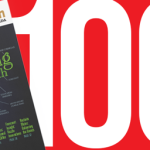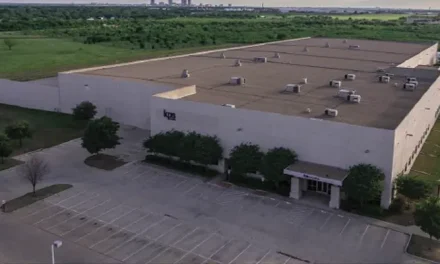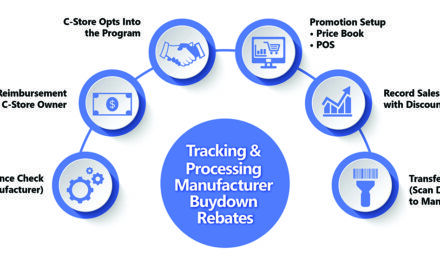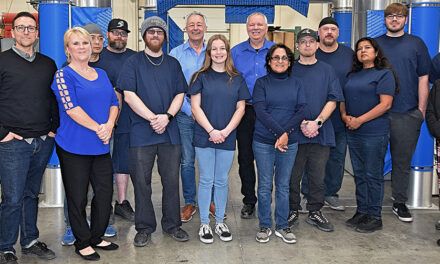
Managing Consumer Expectations

By Angela Altass
Times have changed and lives have been turned upside down due to the COVID-19 pandemic. What does this mean when it comes to consumer expectations?
“Consumer behaviour and expectations have shifted as the COVID-19 vaccine rolls out and they continue to evolve as the Delta variant spreads and unemployment benefits end,” says Alexa Driansky, vice president in the retail practice at AlixPartners LLP. “This is a challenge for retailers. In addition to demand uncertainty, retailers are faced with increasing shipping costs and other supply-chain challenges, raw material inflation, and increasing labour costs.”
AlixPartners recently released a Changing Consumer Priorities study on how COVID-19 anxieties are driving new consumer behaviours. The study, which is available at www.alixpartners.com, notes that half of all global consumers say their spending habits have changed permanently due to the pandemic.
“Our Changing Consumer Priorities study reconfirmed our hypothesis that the pandemic accelerated consumer behaviour changes across how consumers shop, what they buy, and their expectations from retailers,” says Driansky. “Consumers flocked online. We expect this trend to continue going forward. Our study shows 29 per cent ofa consumers expect to shop the same or more online post-pandemic.”
Consumers are changing faster than ever and are demanding more from retailers, says Driansky.
“Consumers expect convenience and value,” says Driansky. “For instance, another survey of ours, the AlixPartners Annual Home Delivery Survey, shows that consumer expectations for free and fast delivery are higher than ever. Consumers now expect free shipping within 3.3 days, which is down from five days just five years ago.”
Retailers are facing massive disruption, both from the pandemic and from digital platforms, which were already disrupting the traditional retail value chain, says Driansky.
“Companies today need a high what we call AgilityEQ, which is the ability to understand the changing market and quickly respond and to be able to do so in a way that meets consumers’ needs,” says Driansky. “It is important for retailers to integrate consumer insights from multiple sources into their decision making and operations. This involves retailers understanding what customers are doing within the store by truly understanding things like transaction data, but also understanding what’s shifting outside of the store by means even as simple as analyzing Google trends. In today’s economy, consumers will shop somewhere else if a retailer does not meet all their needs.”
Throughout the pandemic, the fuel and convenience retail industry has held strong, notes Grace Ayoub, managing director, consumer goods and retail industry practice, Accenture.
“It has provided essential services to consumers even when things were uncertain,” says Ayoub.
Information on consumer expectations can be found in Accenture’s Changing Consumer Expectations & Behavior report and COVID-19: How is the Retail Consumer Changing report at www.accenture.com/ca-en.
The Accenture reports show that consumers expect fuel and convenience retailers to:
Focus on initiatives that will have the biggest impact on consumer confidence. As the pandemic continues and changes, they want companies that will evolve and keep their safety top of mind. This could be through continued requirements for masks, extra cleaning of surfaces and limiting the number of shoppers in small spaces.
Train store associates to handle today’s new customers by ensuring employees are aware of new protocols and trained on how to best approach customers.
Consider how to improve the consumer experience and for those behaviours that did have an impact, like delivery services and contactless fueling, to increase the likelihood that they’ll become permanent behaviour and drive consumer loyalty.
Fuel and convenience retailers need to prepare for the new consumer emerging from the pandemic as research shows the majority have new values and new purchasing motivations, states Ayoub.
“Consumer habits are shifting from in-store to virtual purchases,” says Ayoub. “The definition of convenience has changed, more and more people are expecting anything, anytime, delivered right to their doorsteps. New competitors are emerging. Store consolidation is squeezing margins.”
Convenience retailers have responded to this trend by experimenting with curbside pickup, drive-thus, or home delivery, notes Ayoub.
“Consumers are asking: Are you making my experience with your brand as personal as it can be? That is why convenience and fuel retailers are also experimenting with mobile apps and using more personal data to tailor the experience to the consumer,” says Ayoub. “The use of data and technologies to tailor offerings and make the experience easier for consumers will become key in years to come.”
Consumers are also asking about social and corporate responsibility and the environment, says Ayoub.
“Brand, reputation, social responsibility and sustainability are more and more on the agenda,” says Ayoub. “Having strong ethical values is an important part of the brand promise for today’s consumers. They want to know how brands are keeping them and their neighbours, as well as the brand’s employees, safe. After more than a year of social distancing, handwashing and mask wearing, consumers are highly attuned to the health and safety of any experience and people have become safety obsessed.”
As Canadians ramp up on vaccinations while preparing for a possible fourth wave, health and safety of employees and consumers is paramount, notes Ayoub, adding that many consumers would switch to another brand or store if their health and safety needs were not addressed.
Consumers also continue to look for value, quick service that meets their standards, and a pleasant customer experience, says Ayoub, who notes the following ways that fuel and convenience retailers can stay up-to-date:
- Investing in listening to understand how employees view their workplace.
- Reimagining the customer experience and ensuring all aspects of operations – marketing, sales, innovation, customer service– understand new consumer motivations.
- Evolving the business model and aligning technology, data and talent to continuously improve experiences and give people what they desire without sacrificing profitable growth. This may include updating pricing, different distribution channels or new revenue streams.
Ayoub advises fuel and convenience retail store owners to focus on the following four key areas:
- Creating safe, contactless experiences for in-store shopping
- Rethinking product and services to meet evolving consumer needs, such as expanding health and wellness offerings
- Caring for the health and safety of employees to build loyalty
- Improving consumer engagement by accelerating technology investments such as enhancing the digital experience.
Consumers expect the same things that they always have from convenience stores: convenience and a good stock of different snacks, drinks and other food, says Shawn McGrath, industry research analyst at IBISWorld and author of the Convenience Stores in Canada Industry Report, which can be found at www.ibisworld.com.
“However, there has been increased visibility about keeping virus-free so customers expect an additional level of cleanliness, whether it’s hand sanitizer stations at doors or other frequently-touched surfaces or the addition of touchless payment capabilities to mitigate against handling cash or credit card terminals at the point of sale,” says McGrath, noting that the research for the report did not uncover anything that he found to be too surprising. “As an industry that relies on travel and increased movement, it lost momentum as Canadians traveled less and among those that did, whether for an essential job or other reason, they were likely less willing to be inside a smaller store and experience additional exposure to coronavirus. Revenue declines, furloughs and store closures were an expected outcome of such stringent travel restrictions and public fear that cut into travel and consumer spending.”
As the vaccine rollout is going well and Canada is now more than 60 per cent vaccinated, with nearly three-quarters of all Canadians having received at least a first vaccine dose, consumer priorities are starting to return to normal as remote work is starting to end and travel restrictions, including the international arrival of vaccinated Americans, are lifted, notes McGrath.
“However, as mask requirements continue in many public places, industry operators continue to stock these and other health items whereas they may not have prior to the pandemic,” says McGrath. “My advice would be to encourage vaccinations among staff. Closure due to exposure and contact tracing within a store could prove very costly. Some customers may not want to come in the store as they are still nervous about being around others in such a confined space, so ensuring that they will be safe, whether by adding touchless payment options or imposing capacity restrictions, is a good way to keep customers coming back to the store.”
Popbox Market, located at 725 Dovercourt Road in Toronto, has successfully remained in business throughout the pandemic by offering specialized categories like spices, coffees, and chocolate.
“We have items that have a wow factor and there has been a tremendous appetite for that as the rug was pulled out from under everyone’s feet,” says Attila Szanyi, owner of Popbox Market. “We have remained open every single day throughout the pandemic. Staffing was quite an issue at the beginning of the pandemic. We are a café too. When all else fails, food never does as we will always continue to eat. The café is about a third of our business and the soul of our business with all the classics: an espresso machine, pastries, grab-and-go salads, and a lot of fresh food.”
Although he likes to stock healthier options, Szanyi is clear to clarify that Popbox Market is not a health store.
“We are a convenience store but more and more over the years we’ve steered our offerings into specialized categories,” says Szanyi. “Over six years, I’ve seen so many trends come and go. One of my big lessons in this business is the more you commit to what you’re doing, the more favourably customers will respond. Enthusiasm rubs off on customers. We have just started getting into spices. I think it’s an area that isn’t as developed as chocolate, coffee and tea and yet is one of the great categories.”
Szanyi has also started an online business, www.savorly.ca, to compliment his Toronto store.
“We were getting to that before COVID so it wasn’t just a pivot from the pandemic,” states Szanyi. “It’s not even a year old yet and is doing better monthly. I can see it becoming on par with the brick and mortar business in two years or so. Our store’s footprint is quite small and we pay an exorbitant amount of rent. We’ve done pretty much everything we can with 1,000 square feet while the online store is limitless and is a Canada-wide business. However, I think the brick and mortar store gives a certain level of street credibility to the online business and it increases our buying power. If we were just purchasing wholesale with the online sales only it would be very tricky to aggressively build it as much as we are.”





































